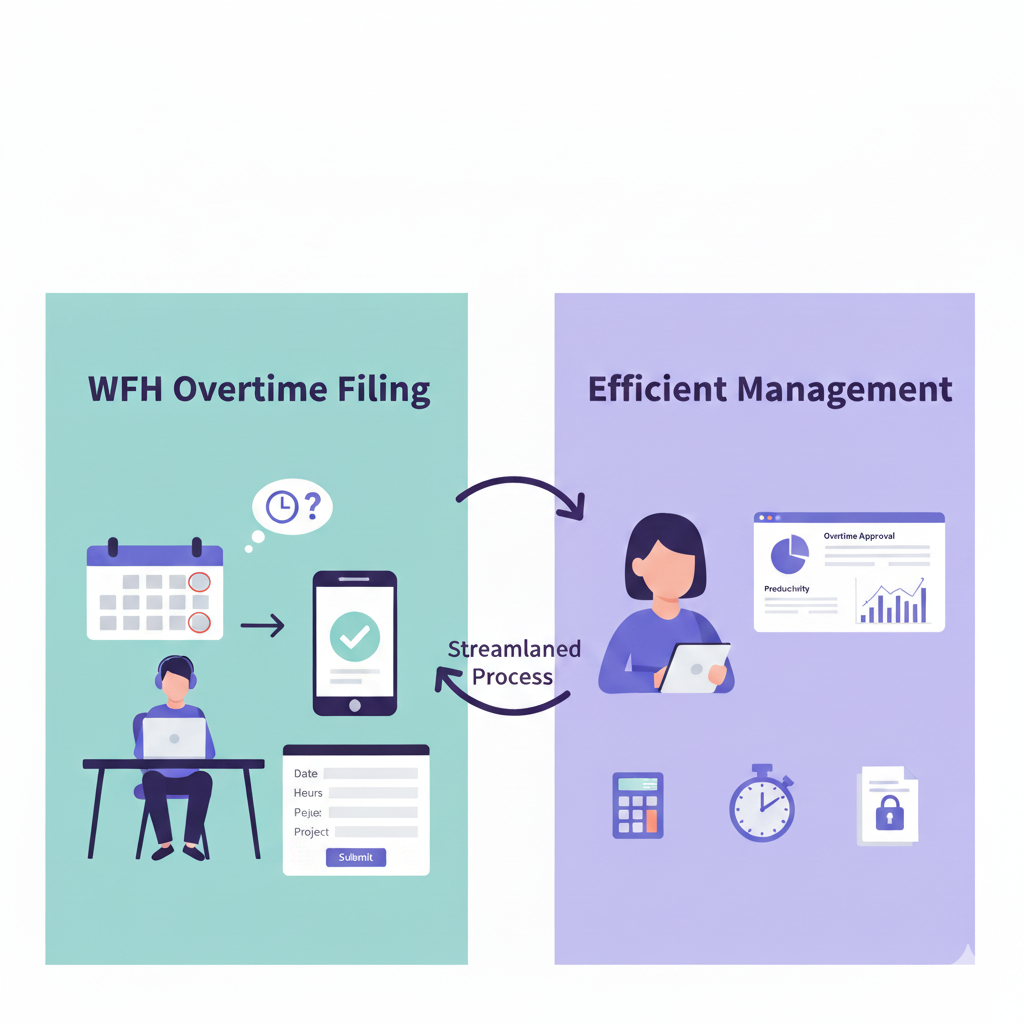With the rise of remote and hybrid work setups, companies face new challenges in managing employee time and productivity. One area that often causes confusion is WFH (Work From Home) Overtime Filing. Unlike traditional office settings, tracking overtime hours for remote employees requires clear policies, reliable systems, and transparency to ensure both compliance and fairness.
In this article, we’ll explore what WFH overtime filing is, why it matters, and how HR teams can manage it efficiently using best practices and modern HRIS (Human Resource Information System) solutions.
What is WFH Overtime Filing?
WFH Overtime Filing is the process of logging, approving, and compensating overtime hours worked by employees in a remote work setup. It ensures that employees are paid fairly for work performed beyond their regular schedule, while also protecting the company from compliance risks.
In most organizations, overtime filing involves:
- Employees submitting overtime requests or logged hours.
- Managers verifying and approving the request.
- HR or payroll teams processing overtime pay based on company policies and labor laws.
Why WFH Overtime Filing Matters
- Ensures Fair Compensation: Employees working extra hours remotely should be recognized and paid accordingly, just like in-office staff.
- Legal Compliance: Labor laws in many regions require proper tracking of overtime. Without WFH filing procedures, companies may risk legal disputes or penalties.
- Promotes Transparency and Trust: A transparent filing process reduces conflicts and builds employee confidence in HR and management.
- Improves Productivity Insights: WFH overtime data can help businesses analyze workload distribution, employee availability, and possible burnout risks.
Challenges in WFH Overtime Filing
- Lack of Monitoring: Remote setups make it harder to confirm actual hours worked.
- Inconsistent Policies: Without clear guidelines, overtime filing can lead to confusion.
- Manual Tracking Errors: Relying on spreadsheets or emails increases the risk of miscalculations.
- Approval Delays: Without automation, approvals may get stuck in back-and-forth communication.
Best Practices for Managing WFH Overtime Efficiently
- Set Clear Overtime Policies: Define what qualifies as overtime in a WFH setup. Communicate rules to employees to avoid misunderstandings.
- Use HRIS or Time-Tracking Software: Automated systems record logins, logouts, and overtime requests in real time, reducing manual errors.
- Automate Approval Workflows: An HRIS can route overtime requests directly to managers, speeding up the approval process.
- Integrate with Payroll: Link overtime filings directly to payroll for seamless and accurate compensation.
- Encourage Work-Life Balance: Overtime should be monitored carefully to avoid burnout. Use data to identify employees consistently working beyond regular hours.
Role of HRIS in WFH Overtime Filing
An HRIS system simplifies WFH overtime filing by:
- Providing a centralized platform for employees to file requests.
- Allowing managers to approve or reject with just a click.
- Automatically syncing overtime records with payroll systems.
- Generating reports for HR to analyze patterns and optimize workforce planning.
Conclusion
WFH Overtime Filing is crucial in today’s flexible work environment. By implementing clear policies, leveraging HRIS tools, and prioritizing transparency, businesses can manage remote work overtime efficiently and fairly.
With the right approach, organizations not only stay compliant with labor laws but also foster stronger trust and productivity among employees working from home.

